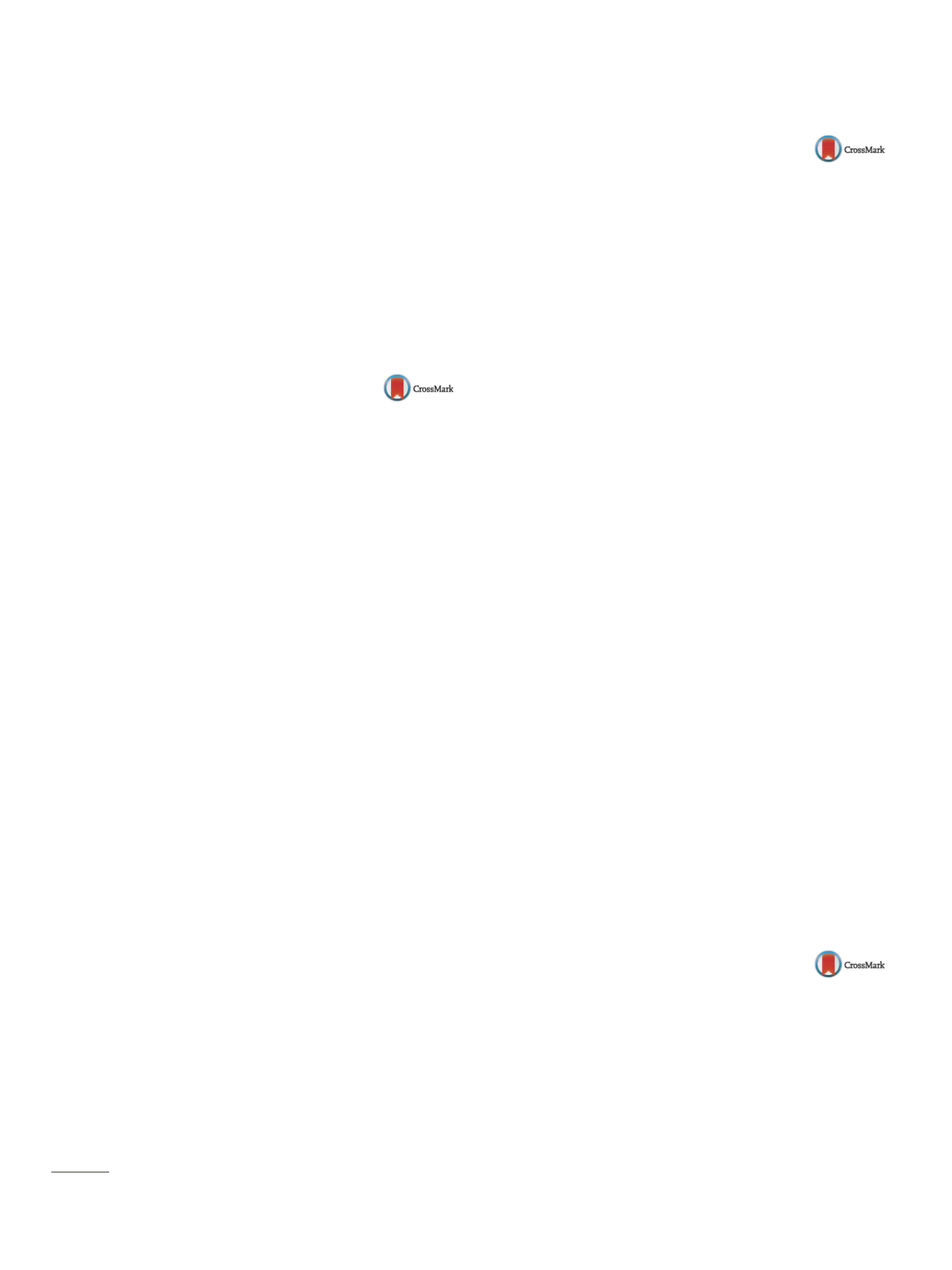

S132
Abstracts / Journal of Clinical Virology 82S (2016) S1–S142
BA-C genotype was identified for only 3 sequences sampled in
Paris. Concerning the hRSV-B group, in France, the 2012–2013 and
2013–2014 epidemics are homogeneous. The genotypes BA-9 and
BA-10 aremainly identifiedwith a predominance of the BA-9 geno-
type in all regions.
Conclusion:
The molecular characteristics of hRSV were deter-
mined for the first time in France. The present study describes the
genetic diversity of recent circulating strains and contributes with
data regarding the respiratory syncytial virus. Subgroup A and B of
hRSV were co-circulating with a predominance of ON1 genotype
for the hRSV-A and BA-9 genotype for the hRSV-B.
http://dx.doi.org/10.1016/j.jcv.2016.08.263Abstract n
◦
: 90
Presentation at ESCV 2016: Poster 224
Measles virus-specific IgG and neutralizing
antibodies in South Korean
Su Jin Kim
∗
, 1, A.-Reum Kim
1, J.A. Kim, Y.W. Han,
H.J. Kang, H.D. Jung, Y.J. Kim, J.G. Nam, S.S. Kim
Division of Respiratory Viruses, Center for Infectious
Diseases, Korea National Institute of Health, Republic
of Korea
Measles is a highly contagious viral disease and causes fever,
runny nose, cough and a rash all over the body. Also complica-
tions will lead to potentially life-threatening. South Korea declared
nation-wide measles elimination in 2006 and verified as measles
elimination by the WHO in March 2014. Measles control has a high
priority in many countries, and it is important that questions about
the possible vaccine failures and waning immunity be addressed
so that the strategy to eliminate measles may be evaluated and
strengthened.
We investigated measles virus-specific IgG titer and neutraliz-
ing antibodies for assessing immunogenicity ofmeasles vaccination
in the vaccinated population aged 4–25 years old in Korea. Measles
virus-specific IgG antibodies levels were measured using com-
mercial enzyme-linked immunosorbent assay (ELISA) kits and
neutralizing antibodies were determined using plaque reduction
neutralization test (PRNT) with Vero/hSLAM cell and Edmonston
strain.
In this study, SouthKorea population’smeasles immunity is high
because of immunization program recommending 2 doses of vac-
cines after 1997. However measles specific IgG antibody levels and
neutralizing antibody levels declined in middle- and high school
years. Our data may provide information on measles occurred in
vaccinated population.
Acknowledgement:
This study was supported by intramural
research fund of NIH Korea; No. 2014-ND47002-00.
http://dx.doi.org/10.1016/j.jcv.2016.08.2641
These authors contributed equally to this article.
Abstract no: 165
Presentation at ESCV 2016: Poster 225
Antiviral effect of hydroxyurea on B19V
replication
F. Bonvicini
∗
, A.M. Giudice, G. Bua, I. Conti,
E. Manaresi, G. Gallinella
University of Bologna, Italy
Parvovirus B19 (B19V) is a human ssDNA virus with a strict
tropism towards erythroid progenitor cells in bonemarrow. In sub-
jects with underlying haematological disorders or with immune
system deficits, the viral-induced arrest of erythropoiesis can
lead to severe clinical manifestations requiring hospitalization and
supportive treatments. No specific antiviral drugs are presently
available for B19V treatment, although recent research showed a
specific antiviral activity for the acyclic nucleotide analogue cido-
fovir. In the search of additional antiviral compounds, hydroxyurea
(HU), an S-phase specific inhibitor of DNA synthesis, was evaluated
for its possible inhibitory effect towards B19V.
UT7/EpoS1 cell line and peripheral blood mononuclear cells
(PBMC)-derived EPCs were infected with B19V, and the activity of
HU in the inhibition of B19V replication, expressed as EC
50
, was
assessed by qPCR evaluation of nucleic acids accumulation. Cellu-
lar growth, viability and proliferation in the presence of HU was
determined in both systems and expressed as CC
50
values. To char-
acterize the EPCs system, cells were analysed by flow cytometry
to evaluate the expression of the specific erythroid markers CD36,
CD71 and CD235a, following B19V infection and with or without
HU.
B19V replicationwas inhibited by HU in a dose-dependent man-
ner yielding EC50 values of 139 M and 175 M for UT7/EpoS1
and EPCs, respectively. In both systems, the inhibitory effects on
cellular replication yielded CC50 values of 457 M and 491 M
respectively. Flow cytometry analysis indicated that both HU (in
the range of the EC
50
value) and B19V blocked EPCs differentiation
along the erythroid lineage, without additive effects.
HU is an approved drug for the therapy of sickle cell dis-
ease (SCD). Interestingly, recent data indicate that HU therapy
minimizes symptoms of worsened anemia during B19V-induced
transient aplastic crisis (TAC) in children with SCD. Our present
study provides evidence of an antiviral activity of HU against B19V
and lends experimental support for the observed attenuation of
clinical symptoms during TAC episodes caused by B19V infection
in the SCD population in the context of HU therapy.
http://dx.doi.org/10.1016/j.jcv.2016.08.265Abstract no: 26
Presentation at ESCV 2016: Poster 226
A modern sub-lingual immunotherapy for
neutralization of EBV
G. Glady
EBMA, France
EBV is probably the most spread virus within the human race,
because about 90% of the general adult population are carriers of it.
The biological diagnosis is at present codified very well and
allows to detect easily the “healthy carriers”, those which are nor-
mally immunized.
It turns out nevertheless, that those are not necessarily the most
numerous, and that there is a large number of patients disturbed
by the presence of the virus, and which are going to develop or a


















